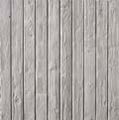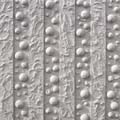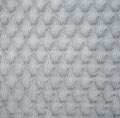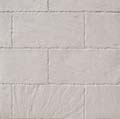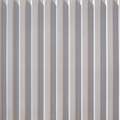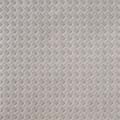Structural concrete
Concrete structure , even texture concrete is called a form of exposed concrete , in which the surface is designed plastically. The term usually only refers to the design of the surface . Structural concrete is a design element in the architecture of facades : gable walls, balconies, entrances, stairwells, parapets, parapets and many other components can be designed with structural concrete.
Structural concrete can be produced by means of elastic forms, by inserting structural matrices in the formwork , processing the fresh concrete surfaces or by subsequent processing of the surface of the hardened concrete.
Structure variants
All conceivable structures can be produced using the textured formliners. The concrete surfaces can also be colored.
Photo engraving technique
The photo-engraving technique is a computer-aided process for transferring image information to panel materials using milling technology. To do this, an image template is first scanned and converted into 256 gray levels. For the transfer of the image to the material, a processing file is generated from the determined gray values, which contains milling commands for a CNC milling machine. A correspondingly milled model then serves as a template for the production of the elastic photo-engraving matrices. Their elasticity, quality and reproducibility make the entire process aesthetically and economically feasible for a picture-like concrete surface.
Lighting effect
Like every structure, the photo engraving lives from the play of light and shadow on the facade. Grazing light makes the photo appear more clearly in the concrete than frontal light. On the facade, the wandering sunlight leads to varied visual impressions. In the interior, the structure can be accentuated by lighting . The relief-like surface of the photo engraving creates an image of the original image solely through light and shadow effects. The orientation of the V-shaped grooves to the (dynamic) light source and the respective position of the viewer determine the degree of recognizability of the motif. When light is incident at an angle, the shadow lengths are analogous to the groove depths. They create the black part of the picture. The motif is thus easily recognizable from a perpendicular or opposite viewing position.
The visible shadow areas are shortened from a viewing position aligned with the incidence of light. This makes the motif less contrasting. If the viewing angle is more acute than the angle of incidence, the subject appears "negative".
If the light falls perpendicular to the object plane, no shadows form in the grooves - the motif cannot be seen from any viewing position.
gallery
Individual evidence
- ↑ Structural concrete at Baulexikon online
- ↑ Photo-Engraving-PDF ( Memento of the original dated August 13, 2011 in the Internet Archive ) Info: The archive link was inserted automatically and has not yet been checked. Please check the original and archive link according to the instructions and then remove this notice.



